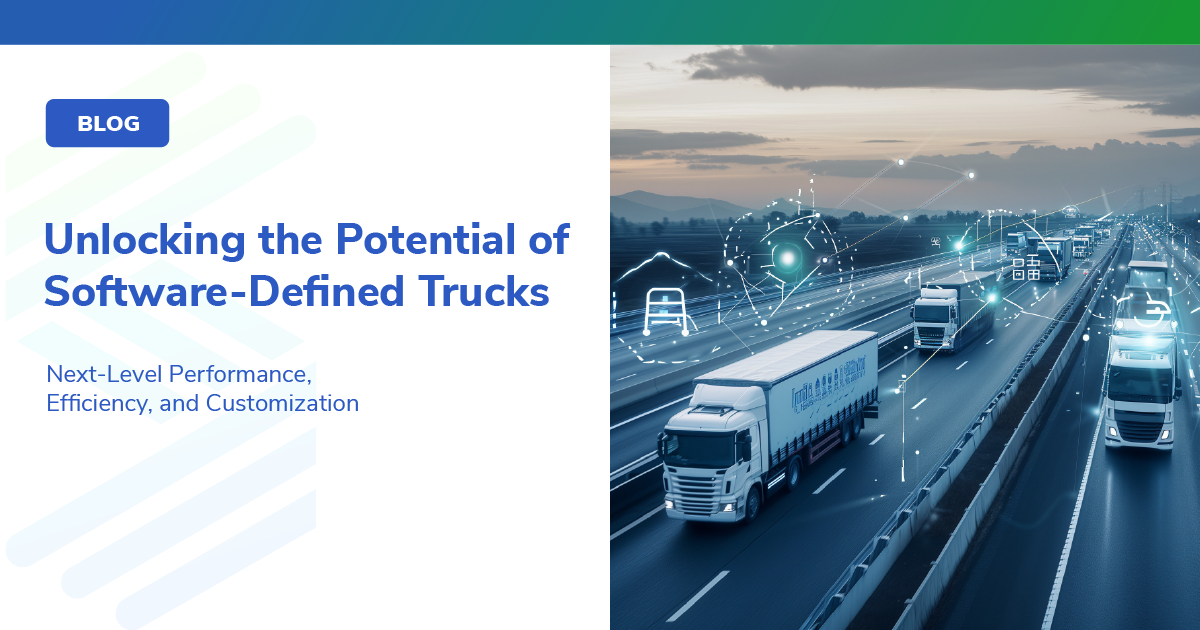
/
December 12, 2022
/
#
Min Read
Agriculture: Going Electric and Getting Connected
Electric tractors are a viable alternative to traditional diesel engines, but they still come up against a few challenges. What doors can automotive-connected vehicle technology open for agricultural original equipment manufacturers (OEMs) and could OTA be the key to overcoming precision farming pain points?
Benefits of Electric Tractors
Sustainability is the first and most obvious benefit when switching to electric agriculture equipment. According to the United States Environmental Protection Agency (EPA), agriculture contributes to 11% of total greenhouse gas emissions. Electric tractors not only reduce emissions but also eliminate the industry’s dependence on expensive nonrenewable resources. Instead of utilizing fossil fuels, EVs leverage renewable energy sources, such as solar, wind, or hydro.
EVs are also more efficient than diesel tractors. In an ICE tractor, the combustion process alone sucks up about 65% of the vehicle’s energy. Then there are other factors such as inefficiencies in the mechanical powertrain, idling, and heat loss, which cut into the available power. At the end of the day, diesel engines are only around 20% efficient. On the other hand, the average electric tractor leverages 90% of its energy for functional purposes.
While EV battery weight might be an issue for consumer vehicles, it is a benefit for tractors. Heavy eclectic batteries help increase traction. By keeping one or more exchangeable battery packs onboard, farmers not only improve the vehicle’s functionality but also eliminate the need to halt operations to recharge.
Electric Tractor Costs
While the upfront cost of a diesel tractor is significantly less than its electric counterpart, in the long run, EVs are the more cost-effective option. Here’s why.
Due to their minimalist designs, electric tractors have fewer moving parts, which means lower maintenance and warranty costs over time. The price of EV batteries continues to decrease due to design improvements and the utilization of more economical materials. Meanwhile, diesel continues to increase in price. In addition, some states offer incentives to reduce the initial financial burden on farmers. For example, California’s Clean Off-Road Equipment (CORE) Voucher Incentive Project covers between 50 and 70 percent of the tractor value. As the industry continues to evolve we will likely see more states and countries adopting this strategy.
Overcoming Ag Pain Points with Connected Solutions
With both diesel and electric tractors, OEMs are still working to enable advanced capabilities (including full autonomy) and overcome precision farming pain points. Some challenges include:
- Scalability
- Preventive maintenance
- Large-scale data collection, filtering, and analysis
- Support for implement and vehicle versatility
- Zone variability management
- Land area and pesticide optimization
Having the ability to quickly transition between implements and engine settings (eco, off-road, on-row, plowing, harvesting, etc.) is crucial for reducing downtime and site efficiency. While Advanced Driver Assistance Systems in cars need to be able to identify obstructions and unplanned lane departures, tractor systems need to be able to determine soil salinity, nutrient levels, fruit ripeness, pesticide use requirements, wind speed, temperature, tillage depths, and more. Most modern tractors have some form of telematics unit connectivity, however, many lack the solutions needed to process collected data and turn it into actionable results.
Sibros’ award-winning Deep Connected Platform (DCP) enables heavy equipment manufacturers and end-users with a robust suite of purpose-built automotive technological solutions. DCP enables data-driven optimization of pesticide and herbicide usage in compliance with EPA regulations, remote and on-demand engine mapping, superior data compression for expedited transfer of RAW data, and full scalability.
DCP is 95% product-based and compatible with any vehicle architecture to support legacy ICE tractors, aid in the transition to EV alternatives, and enable the smooth integration of novel implements. By utilizing robust bootloaders, DCP is designed to withstand regular system and component reflashing required to support vehicle repurposing and utilization of associated implements. With functional OTA updates and customizable data logging to and from every ECU, agricultural OEMs can proactively identify faults, perform predictive maintenance, enable self-configuration based on local conditions, and enhance machine precision and accuracy for the entire tractor lifecycle.
Ready to learn more about Sibros connected vehicle solutions? Schedule a demo today.













